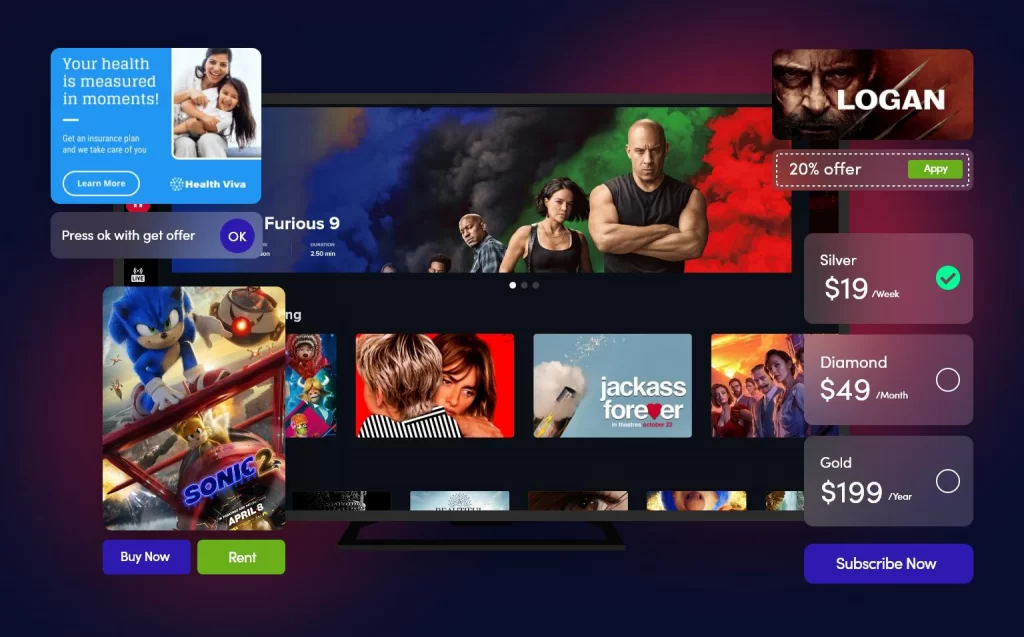Apollo Group Tv Things To Know Before You Get This
Apollo Group Tv Things To Know Before You Get This
Blog Article
Facts About Apollo Group Tv Uncovered
Table of ContentsAn Unbiased View of Apollo Group TvThe Ultimate Guide To Apollo Group TvApollo Group Tv Can Be Fun For AnyoneApollo Group Tv - The Facts
In this scenario, rather than having three-minute commercial areas throughout a 30-minute television program, television programs may alter to one where a customer will certainly be required to have a month-to-month membership, to make sure that they cen view targeted banner advertisements. This type of advertising and marketing already takes place on the web, and the quantity of data television firms collect allows them to do much the exact same.Define the significant patterns among the broadcasting and cord networks. Popular radio shows such as police dramatization Dragnet and western cowboy collection Gunsmoke were adapted for television, and new TV programs were sponsored by solitary advertisers, simply as radio programs had actually been.
Today, the television market is even more complicated. Programs are sponsored by numerous marketers; shows is controlled by major media corporations; and the three major networks no more control the airwaves but instead share their customers with countless wire channels. Numerous elements make up these fads within the market, including technological developments, government policies, and the development of brand-new networks.

An Unbiased View of Apollo Group Tv
Established in 1969, (PBS) created out of a report by the Carnegie Compensation on Educational Television, which analyzed the function of educational, noncommercial tv on society. Public tv was likewise planned to offer global accessibility to television for viewers in rural areas or customers who might not afford to pay for personal television solutions.
The period in between 1950 and 1970 is historically acknowledged as the. Other than a little section of airtime regulated by public television, the three significant networks (known as the Big Three) dominated the television market, jointly making up more than 95 percent of prime-time viewing. In 1986, Rupert Murdoch, the head of international firm News Corp, introduced the Fox network, testing the dominance of the Big 3.
Targeting young and minority target markets with programs such as Buffy the Vampire Killer, Moesha, Dawson's Creek, and The Wayans Bros., the brand-new networks wanted to draw stations away from their old network affiliations. Rather than repeating the success of Fox, UPN and WB struggled to make an effect. learn this here now Not able to bring in lots of associate terminals, both new networks reached fewer homes than their bigger competitors due to the fact that they were unobtainable in some smaller sized cities.
This decision paved the method for the advancement of cable television film channels, adding to the rapid development of wire in the 1980s and 1990s. apollo tv group. More deregulation of cable television in the 1984 Cable Television Communications Policy Act removed limitations on wire prices, enabling drivers to bill what they desired for wire services as long as there worked competitors to the solution (a criterion that over 90 percent of all cable markets could meet)
Apollo Group Tv - An Overview

Having actually created the very first "superstation," Turner expanded his realm by establishing 24-hour news network CNN in 1980. At the end of the year, 28 national programming services were available, and the cord transformation had begun. Over the following years, the industry went through a period of rapid growth and appeal, and by 1994 viewers could select from 94 fundamental and 20 costs wire services.
Figure 9 - http://go.bubbl.us/e587da/99ba?/Apollo-Group-TV.16 Enhanced competition from cord channels has caused a stable decline in the networks' audience rankings. During the 1950s, the price of producing a single tv show raised as shows ended up being longer and manufacturing expenses rose. Sponsorship on network tv shifted from solitary sponsorship, in which a program was completely supported and generated by one advertiser, to numerous sponsorship, in which marketers got 1- or 2-minute spots on the program
Pick one of the Big Four networks and publish out its regular programming schedule. Enjoy the network's prime-time programs over the program of a week, keeping in mind the target market for each program.
Excitement About Apollo Group Tv

Linear television, usually described as traditional broadcast TV, incorporates cable and satellite tv. It's called "straight" because content adheres to an established shows timetable, unlike on-demand web content which the specific customer chooses to view based on their very own choices and timetable. So, when you ask, "What is direct TV?", think about it as the classic way of watching television that has been around for years.
Report this page